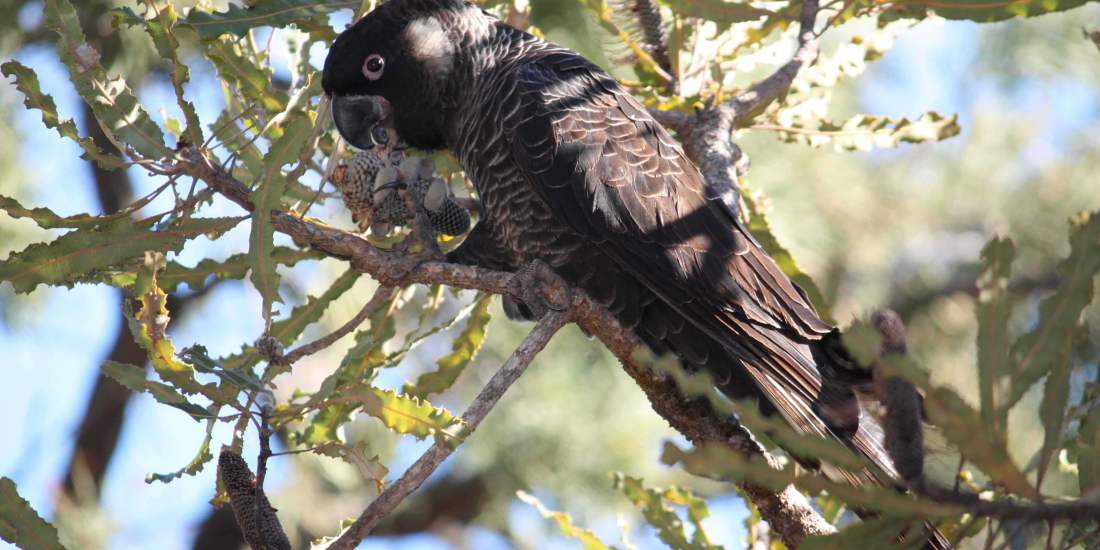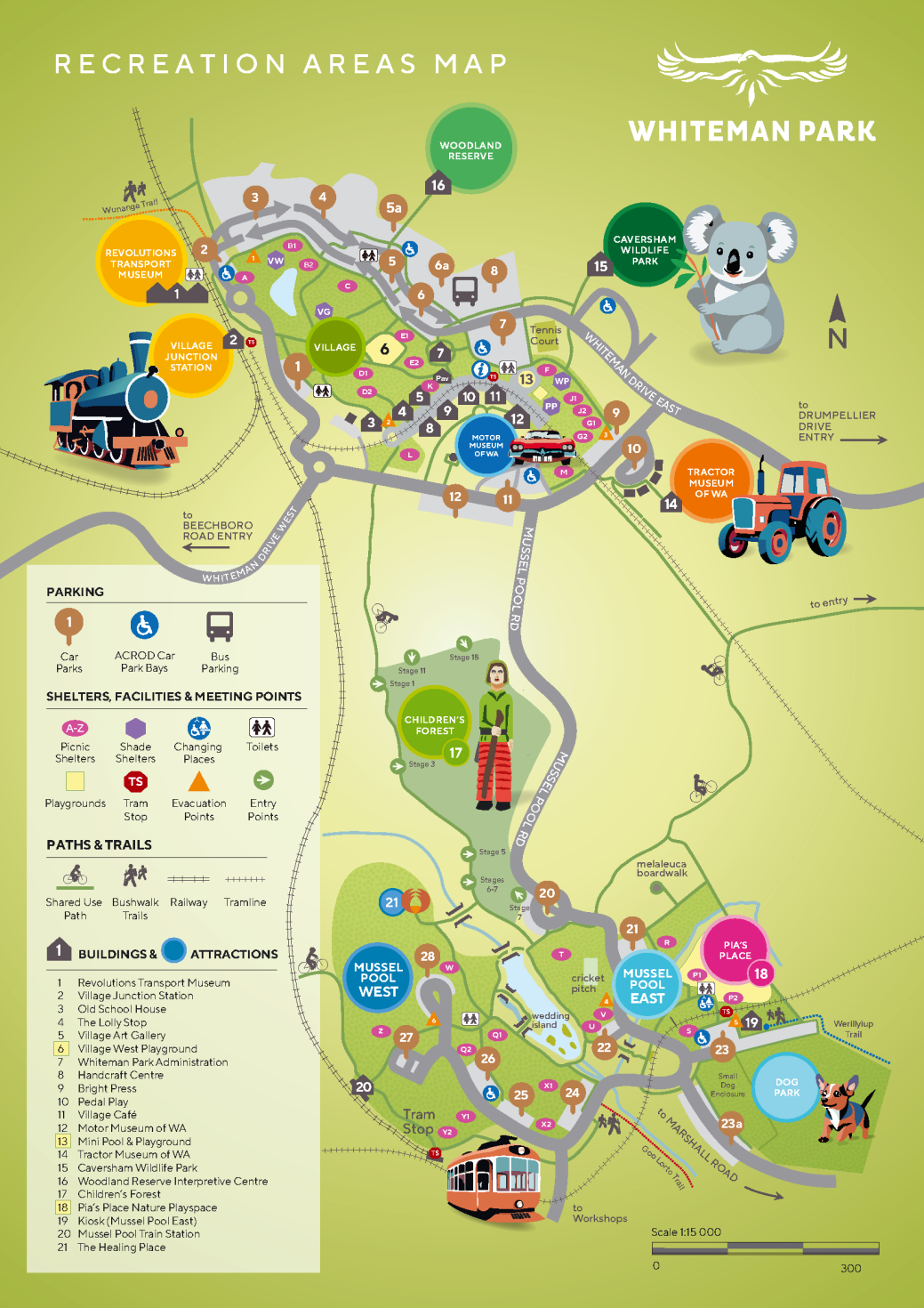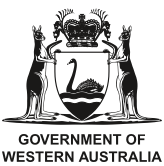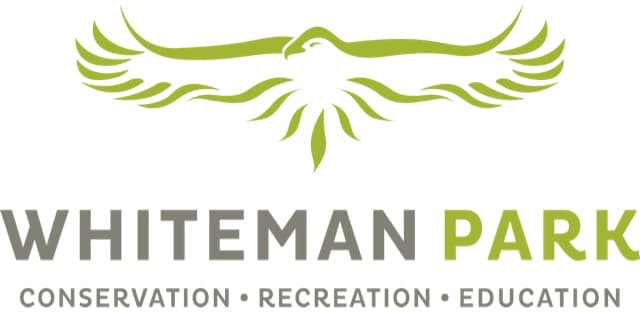Bunuru: A record breaking summer
24 July 2022
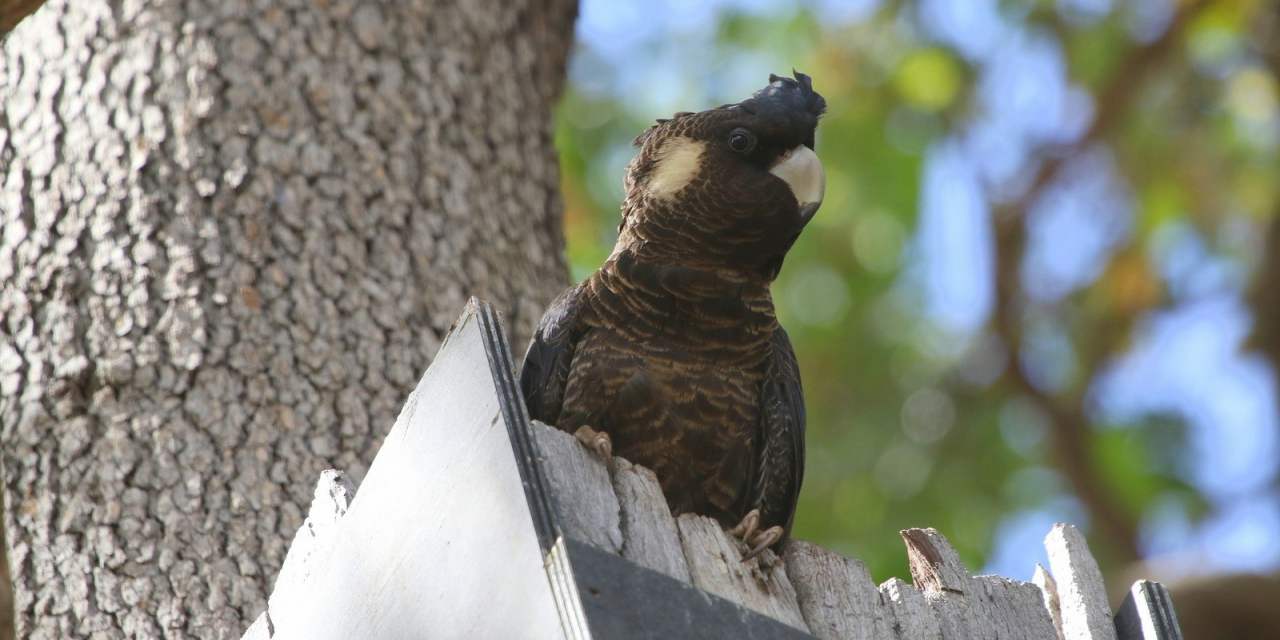
We often refer to Whiteman Park as a ‘haven for wildlife’: it is not often that you find bushland of a quality that can support the likes of the waalitj/wedge-tailed eagle, kaarda/racehorse goanna and gwira/black gloved wallabies in such close proximity to an urban CBD.
But here at Whiteman Park, over 2200ha of remnant banksia woodlands can, and do, support a range of species and we are excited to share that this year it has increased by one more!
Whiteman Park has just sweltered through a record-breaking summer, with 13 days over 40 degrees and 24 days over 35 degrees recorded in Perth. Despite these conditions, another record was broken in the Park – introducing Bunuru, the first Carnaby’s black cockatoo chick known to have been raised in Whiteman Park!
Meet Bunuru, the Carnaby's black cockatoo chick (photo courtesy of S. Stevenson).
Carnaby’s black cockatoos
The Endangered Carnaby’s black cockatoo (Calyptorhynchus latirostris) was not, historically, known to breed on the Swan Coastal Plain, the geological area on which much of the Perth metro area sits. Flocks of these iconic black cockatoos usually migrate inland and spend the second half of the year breeding in the what is now aptly named the ‘Wheatbelt’, where woodland and heathland habitat was vast. However, over 90% of this region has now been cleared for agriculture, and there is a severe lack of real estate and food for these unique cockatoos. And as much as we love the Park (yes, we could be called biased here!), there is a tinge of sadness, coupled with some hope, that the species has been forced to nest so far from their usual breeding grounds.
So, what do Carnaby’s black cockatoos usually look for in a nice home to breed in?
Like almost all native Australian parrot species, Carnaby’s breed in hollows of large, old trees. But to support such large tenants, ‘cockatoo’ hollows need to be at least 30cm wide internally and at least a metre deep and such hollows usually only occur in trees well over 200 years old. They also need to be located within range of enough food plants for cockatoos to eat and feed their family.
Sadly, with so few of these large trees and their all-important hollows left, and less food than ever, breeding opportunities have been disappearing for this iconic species.
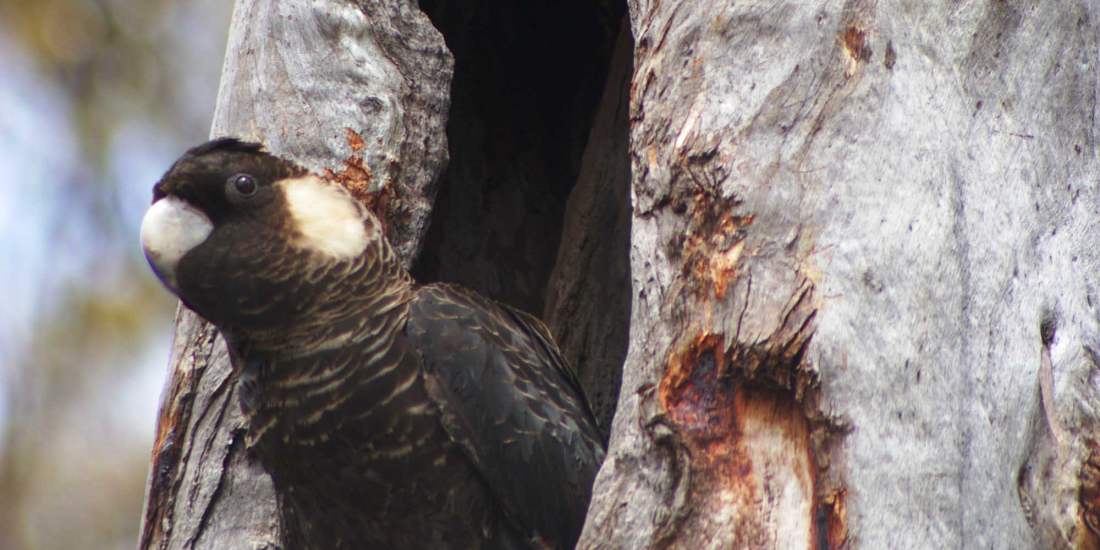
A female Carnaby's black cockatoo in a tree hollow (photo courtesy of Raana Scott)
That’s where the Park comes in.
Not only does Whiteman Park provide a significant area of native bushland in an increasingly urban environment, but the environment team also actively undertake rewilding projects to support our endemic and endangered wildlife. For the Carnaby’s – and the related Baudin’s and forest red-tailed black cockatoos – this includes the restoration of native foraging habitat, where all-important food plants such as banksia, hakea and eucalypts (gum trees) are planted.
In 2018, we also installed 10 very large artificial hollows in select locations around the Park to increase available ‘residential space’ for a range of hollow-dependent fauna, including birds and mammals. These plastic and wooden boxes were quickly used as nest or den sites by the yerderap/Australian wood duck and koomal/common brushtail possum, a good indicator that such boxes were sorely needed.
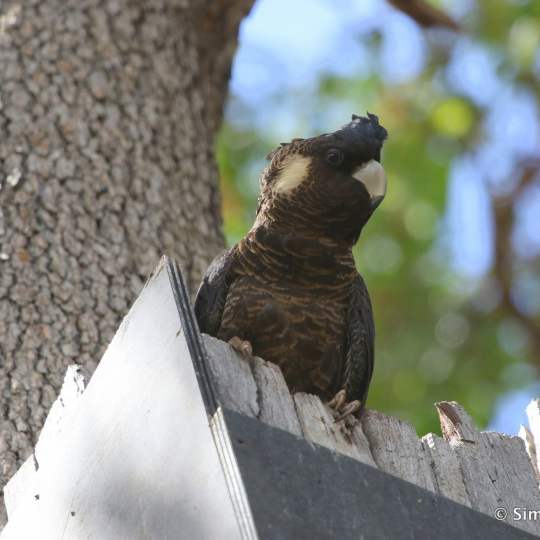
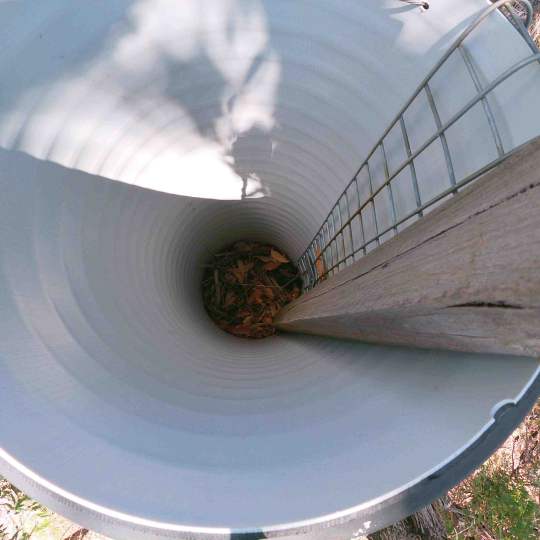
Images (L-R): The female Carnaby's black cockatoo atop the nest box in Whiteman Park; inside a cockatoo tube in Whiteman Park (photos courtesy of S. Cherriman).
In late 2021, ornithologist (bird scientist) Simon Cherriman and his team from The Re-Cyc-Ology Project were monitoring nest-boxes on behalf of the Park when they were surprised to find one of these artificial hollows contained a Carnaby’s black cockatoo nestling!
Three times over the long, hot summer, they went back to check on the cockatoo chick, expecting to find an empty nest after strings of days above 35˚C. But Bunuru, named after the Noongar word given to the hottest and driest season of the year, survived, successfully fledging in March 2022.
As part of an ongoing WA Museum research project on cockatoos, Bunuru was tagged in late February by the Park’s ecologists and ornithologists, Mandy and Mike Bamford*.
Measurements are taken during the banding process by licensed ecologists (photo courtesy of S. Stevenson).
A winning adaption?
While this successful breeding event was overall a positive for the species – and a first for the Park – it provides additional evidence that the breeding distribution of Carnaby’s cockatoo continues to shift towards the coast^, and closer to the threats of Perth’s ‘urban jungle’. The good news is that these West Aussie cockies appear to be super adaptable, as proven by this breeding event. Alongside other critical conservation initiatives across the southwest of the state, there is much hope that, like Bunuru himself, the species will survive against the odds!
How can you help?
Ecologist Mandy Bamford explained that we can all help this iconic west Aussie to thrive if we simply each plant a food plant (or 5!) in our gardens! Like the large-scale plantings occurring in the Park over the last ten years, ensuring these birds have a range of much needed food sources is critical.
Mandy explains that Carnaby’s “have an incredible stored knowledge about landscapes, pinpointing food sources and regularly checking to see if the food is ready!” Banksias and hakeas are the best food plants for Carnaby’s, and they will also feed on marri if you have space for these magnificent trees. Faster-growing food sources that they are also partial to – as long as you’re happy to share – include macadamias and almond trees!
Providing water points in the safety of your backyards (away from the dangers of being struck by vehicles on roadsides) will also help the Carnaby’s and fellow black cockatoos, as climate change further threatens these species.
Why are these the two ways recommended that I can help?
As habitat fragmentation and clearing continues to occur across the southwest, providing plentiful, easy-to-access food and water sources will help them to survive while larger habitat restoration projects like ours grow enough to hopefully support large numbers of black cockatoos in the future!
